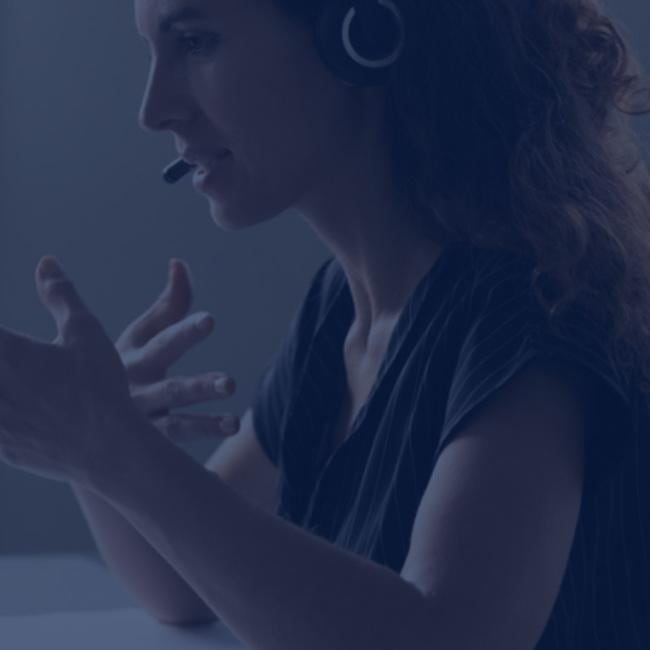Creating Accessible E-Learning: How to Reach Learners Everywhere


As the world becomes increasingly digital, the need for accessible e-learning is more important than ever. Especially in any global company, creating accessible content is not only a matter of compliance but also a way to reach learners everywhere regardless of their abilities. Come along as we explore why accessibility matters in e-learning and how you can make your e-learning programs accessible to all learners.
Why Accessibility Matters in E-Learning
In 2020, the World Health Organization estimated that more than 1,000,000,000 people live with a form of disability. This is approximately 15% of the world’s population. Globally, the market that includes people with disabilities, as well as their family, friends, and advocates, is estimated to control more than $13 trillion in annual disposable income (The Return on Disability Group 2020). This means that companies who ignore accessibility guidelines risk isolating their learners and losing significant potential revenue if they have an online presence.
Accessibility in e-learning refers to making content and learning experiences accessible to learners with disabilities, such as visual or hearing impairments, cognitive or learning disabilities, or motor impairments. Creating accessible e-learning is not only a legal requirement in many countries, but it also makes good business sense. By making your e-learning programs accessible, you can reach a wider audience, including learners with disabilities, and create a more inclusive learning environment for everyone.
How is Accessibility Measured?
The Web Content Accessibility Guidelines (WCAG) are an internationally recognized set of recommendations for improving web accessibility.
WCAG 2.1 is based on four key design principles:
Perceivable – Information and user-interface components must be presentable to users in ways they can perceive. This means that users must be able to understand the information being presented; it can’t be invisible to any of their senses.
Operable – User-interface components and navigation must be operable. This means that leaners must be able to use the interface, and it cannot require interactions that a user is unable to perform.
Understandable – Information and the operation of user interfaces must be understandable. This means that users must be able to comprehend provided information as well as how to use the interface.
Robust – Content must be robust enough that it can be interpreted reliably by a wide variety of user agents, including assistive technologies. This means as technologies and user agents advance and evolve, content should remain accessible.
Creating Accessible E-Learning
Creating accessible e-learning requires a holistic approach that addresses both the content and the platform used to deliver the content. Here are some best practices for creating accessible e-learning:
Use clear and simple language: Use clear and simple language that is easy to understand for all learners, including those with cognitive or learning disabilities.
Provide transcripts and captions: Provide transcripts and captions for all audio and video content, making it accessible to learners with hearing impairments.
Use descriptive alt text: Use descriptive alt text for all images, making them accessible to learners with visual impairments.
Use the correct color contrast: Images using a proper color contrast of 3:1 or greater can make page content more distinguishable and ensure ease of navigation and practicality without the need for contrast-enhancing tools. Text should have a color contrast ratio of at least 4.5:1 against its background.
Choose easy-to-read fonts: Using plain and straight fonts such as Sans Serif, Tahoma, or Helvetica make texts clearer to read.
Make navigation easy: Ensure your e-learning program is easy to navigate with clear headings and labels. Test for accessibility: Test your e-learning program for accessibility using assistive technologies, such as screen readers or speech-recognition software.
Ensure platform accessibility: Ensure the platform used to deliver your e-learning program is accessible to all learners, including those with disabilities.
Creating accessible e-learning can seem like a daunting task, but it is a necessary one. By following these best practices, you can make your e-learning programs accessible to all learners, regardless of their abilities.
The Importance of Accessible E-Learning for Global Companies
Creating accessible e-learning is not only a legal requirement but also a way to reach learners everywhere. By following best practices for accessibility, you can make your e-learning programs accessible to all learners, including those with disabilities. This not only creates a more inclusive learning environment but also helps you comply with accessibility regulations in different countries. With accessible e-learning, you can reach learners everywhere and provide them with a high-quality learning experience.
In addition, creating accessible content can help you comply with accessibility regulations in different countries. For example, in the United States, the Americans with Disabilities Act (ADA) requires that e-learning programs be accessible to learners with disabilities. Other countries, such as Canada and the United Kingdom, have similar accessibility requirements.
To find out more about how to create accessible learning content, check out our webinar! Or contact us here!



